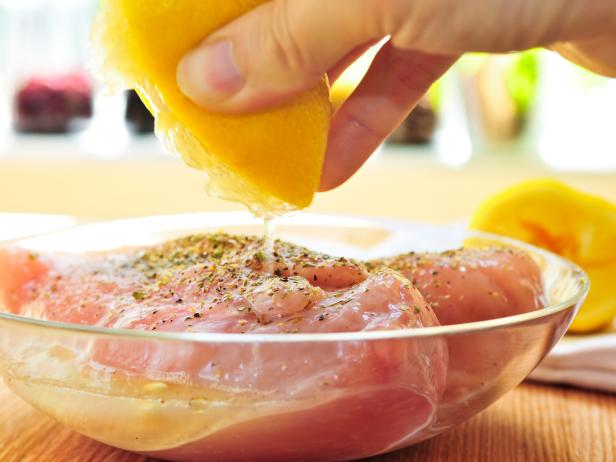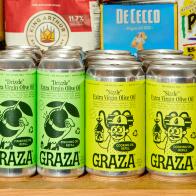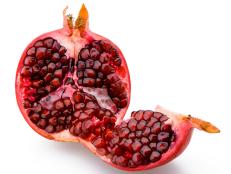The New World of Lean Meats

masaltof, masaltof
If you’re trying to eat healthy and select lean proteins, facing the meat case may be overwhelming. You can now find more cuts of meat and poultry than ever before, and knowing how to cook them can get confusing. Here’s a low-down on how to make sense of the meat and poultry case.
Defining “Lean”
The 2015 dietary guidelines for Americans recommended choosing lean protein. According to the U.S. Department of Agriculture and Food and Drug Administration food labeling criteria, to be labeled as “lean,” the cut of meat must be less than 10 percent fat by weight, or it must contain less than 10 grams of fat and 95 milligrams of cholesterol and a maximum of 4.5 grams of saturated fat per 100 grams. “Extra lean” contains less than 5 grams of total fat, less than 2 grams of saturated fat and less than 95 milligrams of cholesterol per 100 grams.
All of the following proteins are “complete,” meaning they provide all nine essential amino acids that your body needs. However, portion control is of upmost importance. Aim for 3- to 4-ounce portions and serve with whole grains, fruits, vegetables, and low or nonfat dairy for a well-balanced and varied diet.
Pork
Due to increased trimming practices, many cuts of fresh pork are leaner today than they were two decades ago. According to the National Pork Board, today’s cuts on average are about 16 percent lower in total fat and 27 percent lower in saturated fat. In February 2012, pork tenderloin was certified to carry the American Heart Association’s Heart-Check mark, indicating that it’s a heart-healthy choice.
The seven cuts of pork, also referred to as the “Slim 7,” that meet the USDA guidelines for “lean” or “extra lean” are:
Pork tenderloin
Sirloin pork chop
New York pork chop
Ground pork (96 percent lean)
New York pork roast
Porterhouse pork chop
Rib-eye pork chop

Noel Hendrickson, (c) Noel Hendrickson
Beef
Farmers and ranchers raise a variety of beef choices, such as grain-finished, grass-finished, natural and certified organic beef. All beef, no matter how it is produced, is an excellent or good source of 10 essential nutrients: protein, vitamin B12 and B6, selenium, zinc, niacin, phosphorus, choline, iron, and riboflavin. Thanks to increased trimming practices, the external fat in retail cuts has decreased by 80 percent in the past 20 years. Today more than 66 percent of beef cuts meet the guidelines for “lean.”
Below are several popular examples of lean meat. (The entire list of lean cuts can be found on the Beef Checkoff website.)
Top sirloin roast
Tri-tip roast and steak
Bottom round roast and steak
Eye of round roast and steak
Strip steak
T-bone steak
Ground beef (95 percent lean)

Lisovskaya Natalia, (c) Lisovskaya Natalia
Lamb
On average, lamb has only 175 calories per 3-ounce serving, making it a lean protein. It’s an excellent source of protein, vitamin B12, niacin, zinc and selenium, and it’s a good source of iron and riboflavin. As a result of new breeding and grazing practices, lamb has a sweeter and succulent flavor. For best results, cook lamb on high heat for a short amount of time by grilling, roasting, braising, stewing and simmering, or braising.
Lean cuts of lamb include:
Leg
Loin
Rack

iStock/Elenathewise, Elenathewise
Chicken
A 3-ounce serving (about 100 grams) of uncooked skinless, boneless chicken breast contains less than 4 grams of total fat and 1 gram of fat. It also contains 31 grams of protein, and it is a good source of niacin, vitamin B6 and selenium. To ensure that chicken is lean, remove the skin, which is where much of the saturated fat is found.
Lean cuts of chicken:
Skinless, boneless chicken breast
Skinless and skin-on drumstick
Skinless thigh
Skinless wing
Ground chicken breast

Heather Ramsdell, Food Network 2016
Turkey
Three ounces of turkey breast contains 125 calories, 2 grams of total fat, 0.5 grams of saturated fat and 70 milligrams of cholesterol. It is a rich source of vitamins B6 and B12, niacin, selenium, and phosphorus, and it contains notable amounts of iron, zinc, potassium, magnesium and copper.
Lean cuts of turkey include the white parts:
Breast
Cutlet
Tenderloin
Drumette
Wing
Ground turkey (at least 93 percent lean)\
Related Links:
Ask a Dietitian: Does It Matter How Much You Chew Your Food?
Buy This, Not That: How to Make Better Choices at the Supermarket
Toby Amidor, MS, RD, CDN, is a registered dietitian and consultant who specializes in food safety and culinary nutrition. She is the author of The Greek Yogurt Kitchen: More Than 130 Delicious, Healthy Recipes for Every Meal of the Day.


































